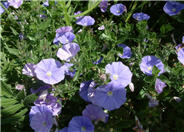
Common name:Dwarf Morning Glory
Botanical name:Convolvulus sabatius
Convolvulus sabaticus is a perennial that grows 1'-2' high, with branches that spread to 3' or more. It produces blue to lavender flowers with blooms of 1"-2" wide. The soft, evergreen leaves are 1/2" to 1.5" long.
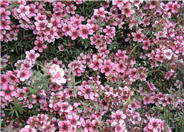
Common name:Gaiety Girl New Zealand Tea Tree
Botanical name:Leptospermum scoparium 'Gaiety Girl'
New Zealand Tea Tree has small, needle-like green leaves with showy, 1/2" rose-like flowers in winter and spring. These shrubs can be thinned to enhance their attractive branch structure and flaking bark. They need very little water once established. 'Gaiety Girl' is a slow grower to 5' tall by 4' wide. It has reddish foliage with double flowers in pink and lilac.
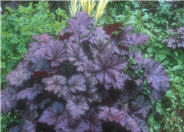
Common name:Amethyst Mist Coral Bells
Botanical name:Heuchera 'Amethyst Mist'
This perennial will grow 1'-2' tall and has medium sized green leaves with pink flowers that bloom in spring and summer.
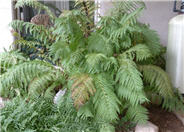
Common name:Giant Chain Fern
Botanical name:Woodwardia fimbriata
The Giant Chain Fern is a large fern that grows 4'-8' tall. It can tolerate full sun but does best in some shade. This fern is native to California and is drought tolerant.
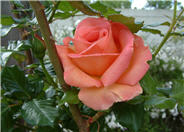
Common name:Hybrid Tea Rose (selections)
Botanical name:Rosa Hybrid Tea varieties
These shrubs and vines are the most loved in the Western USA and are very resilient. They come in a wide variety of sizes and colors and are easy to maintain with proper care. They can be used in a water-conserving garden with careful attention to irrigation practices.
Dealing With Drought
More than half of the water used at your home is for outside purposes. Studies show that on average, half of the water used outdoors is wasted. The leading cause of waste is incorrectly set and poorly managed irrigation controllers. The second biggest cause of wastage is broken irrigation equipment that goes undetected. There are a few basic things you can do to make a big difference in your water use.
Click in the green box for more information
| Designer: The Plant Nerd | Black Table and Chairs Retreat |
Photographer: GardenSoft |
Soils and Compost:
Maintain a two to four inch layer of mulch on the soil surface to reduce weeds, infiltrate rain water, and reduce compaction.
Water Saving Tip:
Integrated Pest Management:
Remove irrigation water and fertilizer from areas where you don't want weeds to grow.
